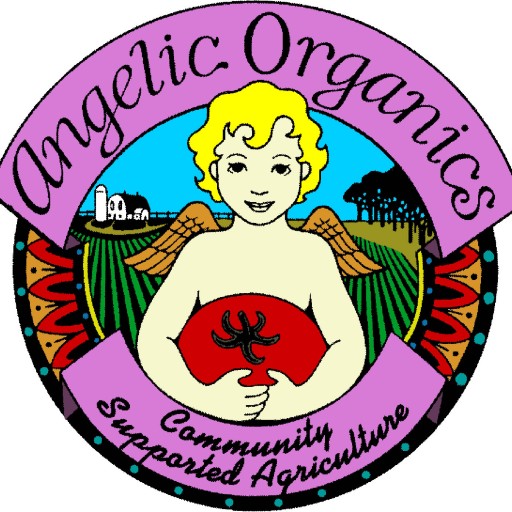Farmer John Writes: Controlling the Weather (Sort of)
Harvest Week 17, October 13th – 19th, 2020

Angelic Organics farmyard. Photo by friend and resident artist Eddaviel.
What to do About the Weather?
For those of you who have been with us prior to this glorious 2020 growing season, you may recall cataclysmic flooding of our fields in 2017, 2018, and 2019. The crop losses were epic; from 1/4 to 1/3 of our crops were lost in each of these years.

Last year’s potato fields—we lost 2/3 of the 2019 potato crop to flooding
Much of the farmland in the Midwest is tiled—a method that facilitates subterranean drainage via perforated pipes (or clay tile from yesteryear) buried at least 2 1/2 feet in the ground. These pipes remove excess sub-surface moisture. Excessive soil moisture inhibits beneficial aerobic activity that thrives on oxygen. Too much moisture can cause dramatic crop failures, as has happened at Angelic Organics for the three years prior to this year. Last year, for instance, we harvested much of our sweet corn wading through up to a foot of water, and we lost most of our potatoes to mud. When the soil is saturated for long, the crop roots will rot and the crop will die.
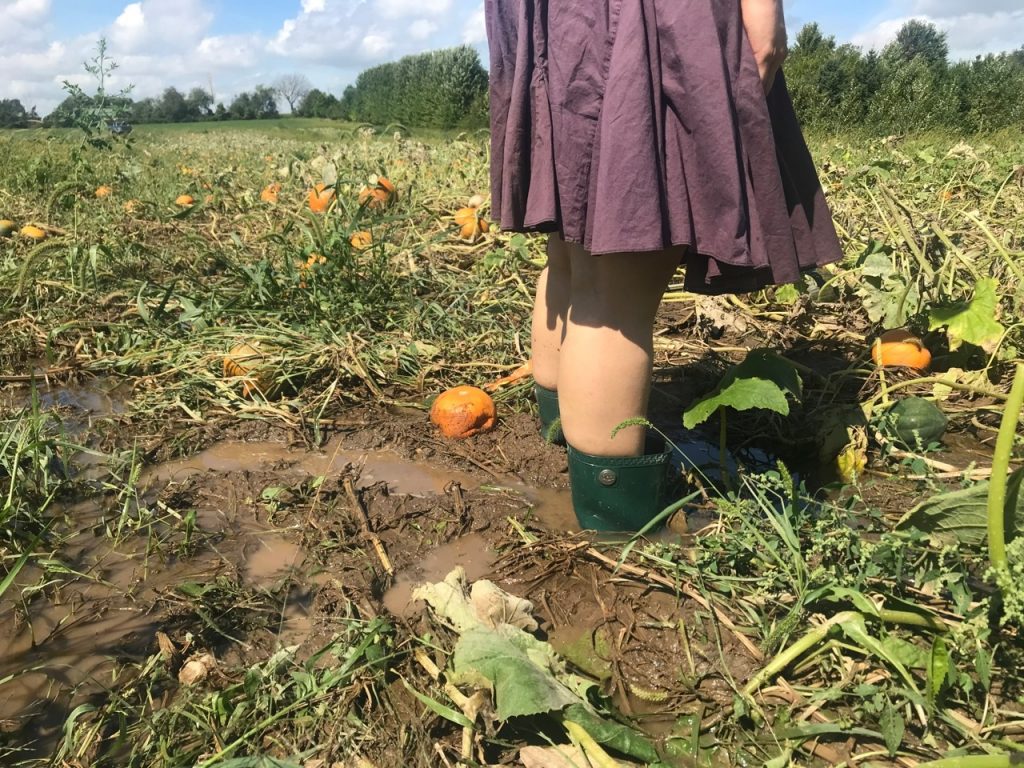
2018 pumpkin field
A Century Ago
In the 1920’s, before my family lived here, a tile line was dug by hand—yes, by hand—about 3/4 mile long that spanned 3 farms, including this farm. For those of you who are familiar with our location, the line went from Rockton Road, starting east of the farm driveway, all the way to Free Church Road, more than 1/2 mile southwest of the farmstead. It was mostly collapsed by the time I was born.
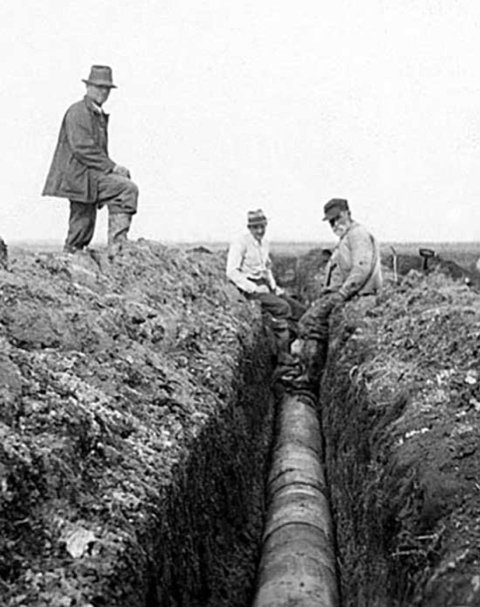
stock photo of tile trench dug by hand at least a century ago (not a photo of a tile project on our farm)

Advertisement for clay drainage tiles from yesteryear: “Three stacks of clay pipes are secured to pallets, stored and ready to be placed in a wagon or on the back of a lorry and in situ – in the countryside for land drainage…”
The 50’s
My family last tiled our farm in the 50’s. I believe the impulse came when my parents built a pasture fence for our dairy herd in our low land, and my dad tried to tamp in an end post to secure it for the purpose of stretching wire from it. Water kept flowing into the post hole from below ground, floating the post to the surface. My dad hoisted my 5-year-old body up to the top of the bobbing post, where I served as ballast to sink the post down into the water so he could secure it by tamping it with soil. (Sorry—no photo of this moment.)
My parents subsequently installed a modest tile line of red clay tiles to drain the wettest part of the farm, but the effort to properly drain the low land was inadequate, plus the clay tiles collapsed over time.
Earlier this Year, Last Year’s Water Wouldn’t Leave
This season, the ground was so saturated from previous years’ rains, that many of our fields would not dry up. We could not even drive a tractor across some of them, let alone till the soil. This condition prevailed into mid-July. I had to re-arrange my crop rotation program to find alternative places for many of the crops.

Soggy fields this summer long after the rains let up
To Feed or Not to Feed
I realize that tiling or land drainage has a somewhat tarnished reputation, given how many ecologically beneficial bogs, swamps, and marshes in the Midwest were drained in order to create tillable land. I doubt that our farmland ever would have qualified as one of these beneficial wetlands. Even if it once did, that time is long past, and now this land is being used to feed our shareholder families.
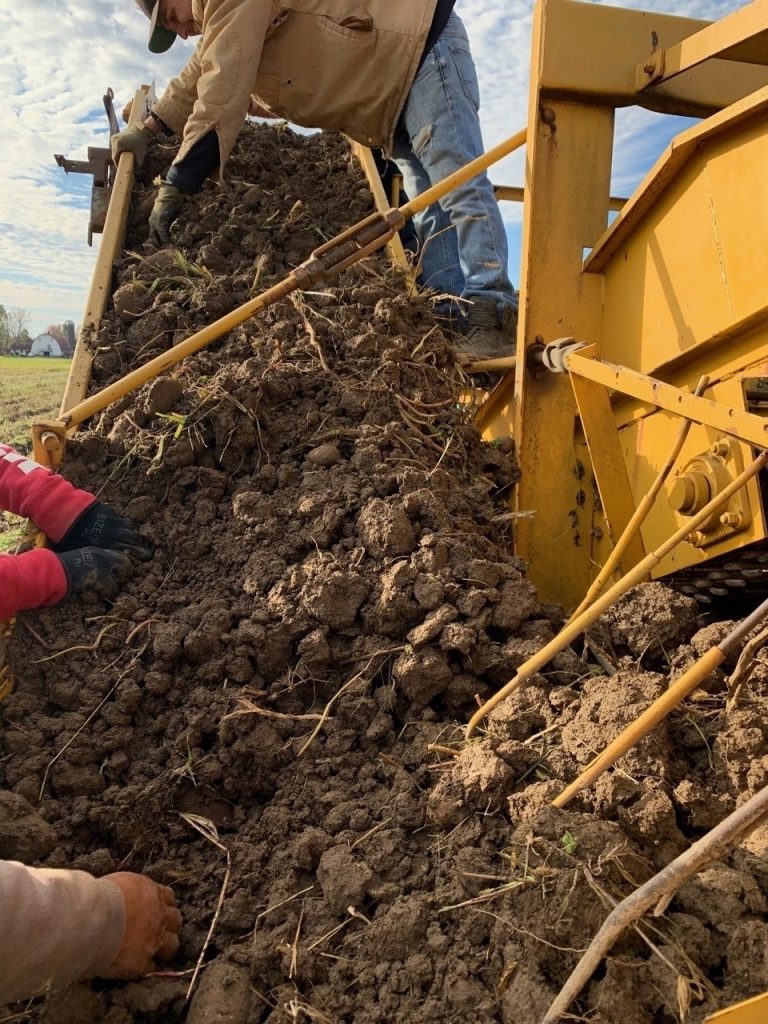
potato harvester plugged with mud last year
Tiling to the Rescue

the deep tiling plow
This fall, Jeff and Diane Wishop, of Wishop Tile and Drainage, have tiled our fields most prone to flooding. They buried perforated pipes 3 feet-or-so deep to drain surplus moisture from our fields to the Kinnikinnick Creek to the Rock River to the Mississippi to the Gulf of Mexico.
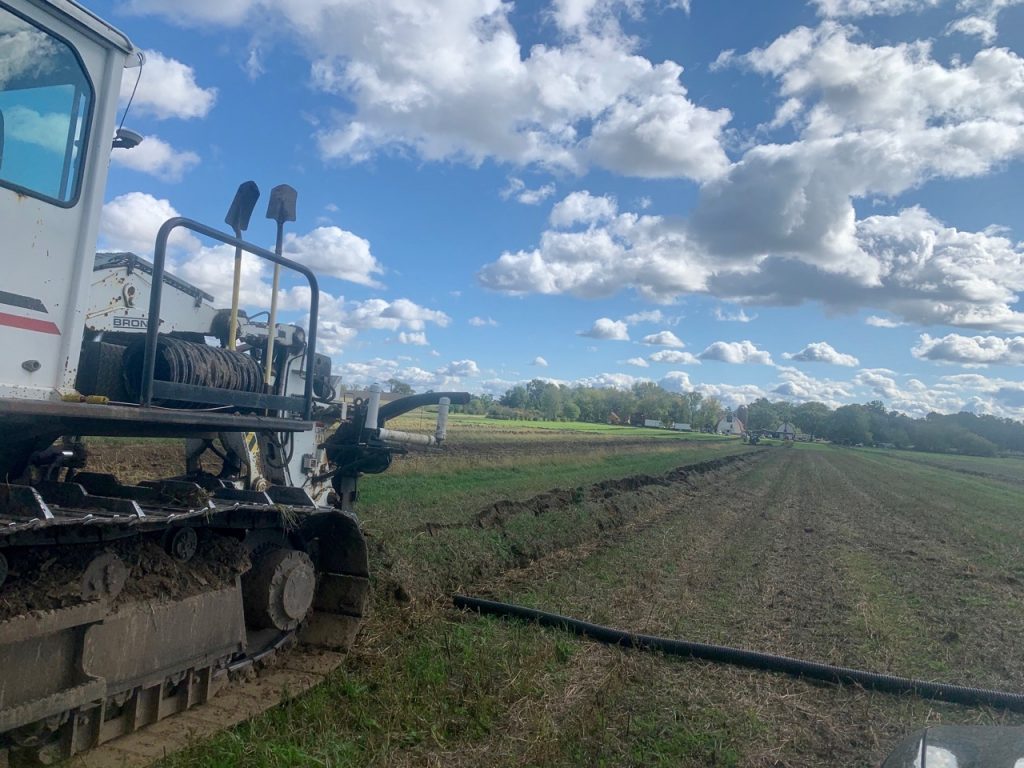
Tiling the fields where last year’s potatoes flooded out
In Case You Wondered
The saying about tiling is that you pay for the tiling whether you tile or not, meaning that a farmer either endures financial hardship from lost crops if he or she doesn’t tile, or endures financial hardship from the expense of tiling. Fortunately, I have had only a fairly modest financial involvement with the tiling, due to the willingness of sponsors to defray a substantial part of the drainage expense.
The majority of the funding for this tiling project was provided by my sister, Carol Krupke, who owns about half the land that was tiled. In addition, a sponsor who wishes to remain anonymous provided a substantial amount of funding for tiling the LLC North land west of the farm driveway (owned by several investors supportive of Angelic Organics.) I provided the rest of the funding.
Thank you dearly to my sister and to the anonymous sponsor whose commitment to land stewardship will make an enormous difference in the sustainability of Angelic Organics for years to come.
Thank you to the Wishops for their diligent tiling work, and for their drone photos below.
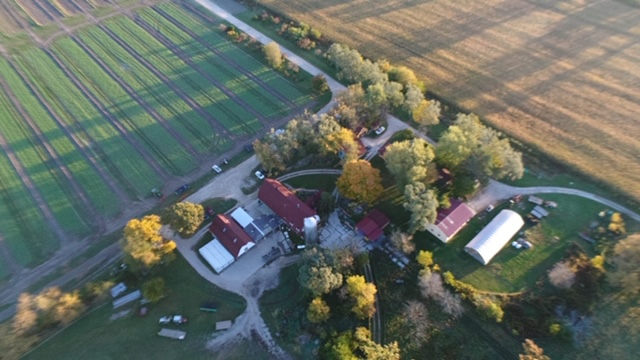
aerial view of farmstead with tiling to the north

Longer view of tiling project on LLC North Land to the north (right) of the farmstead. Bare land includes location of last year’s flooded potato fields and sweet corn fields.

View of tile lines from the west, towards the farmstead at the top of the photo (most of this land belongs to my sister, Carol Krupke)
Ironic
Due to tiling, we are able to drain excessive water from our land in case of flooding.
Due to a deep irrigation well, we are able to provide water to our crops in times of drought.

Water when we need it
Are we therefore controlling the weather?
Sort of.
Tiling as Art
To properly drain a farm, the slope needs to be taken into account, the type of soil, the acreage to be drained, the anticipated rainfall, the types of crops to be grown, etc. It’s an art.
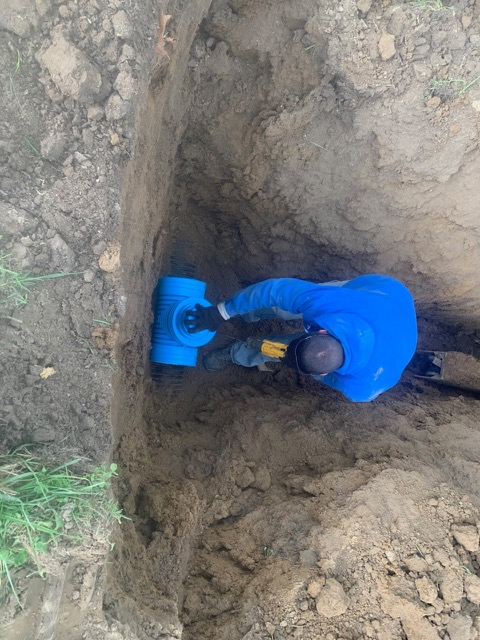
Jeff Wishop connects a lateral tile line to a main line
Drain tile can show up in other forms of art, such as in the third dimension in the mural at the recent Alma art show in Rockford, which was created by our farm’s resident artist Eddaviel and our shareholder friend Jeremy Klonicki. Learn more about this recent fabulous art collaboration in the Rockford Register Star. See more photos of the art event here.
Warmly,
Farmer John

